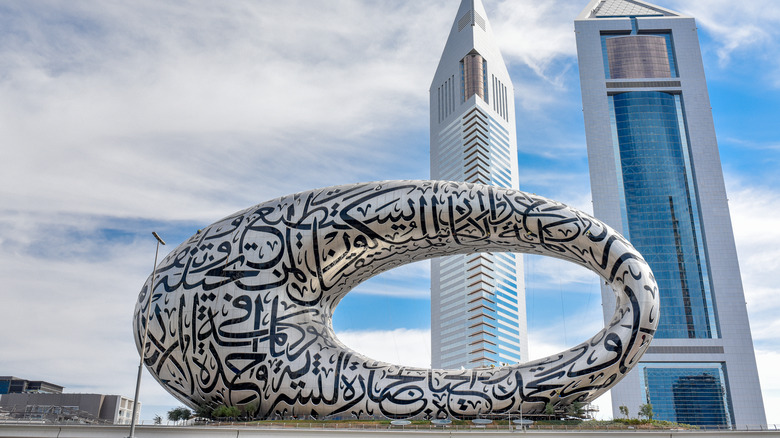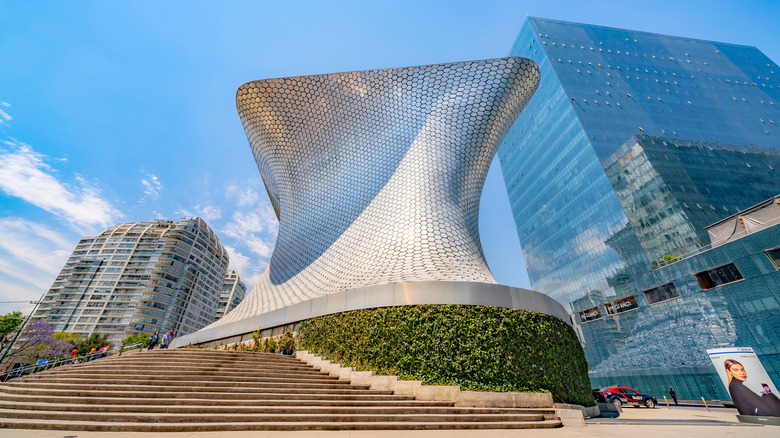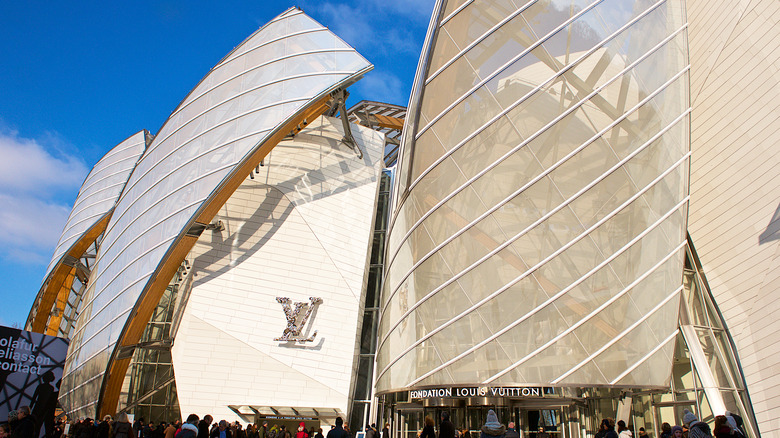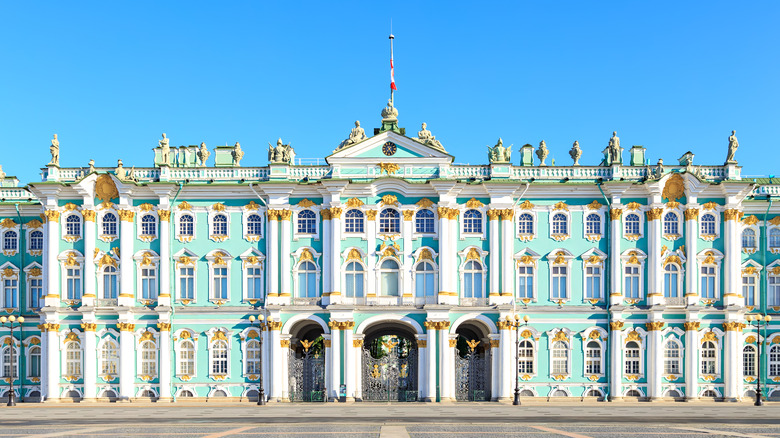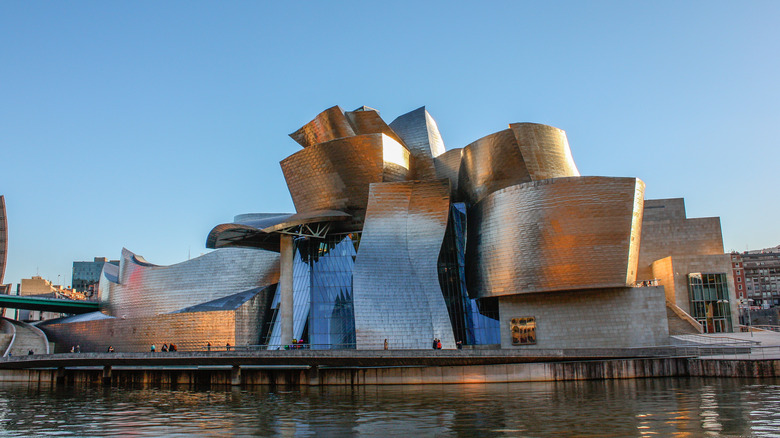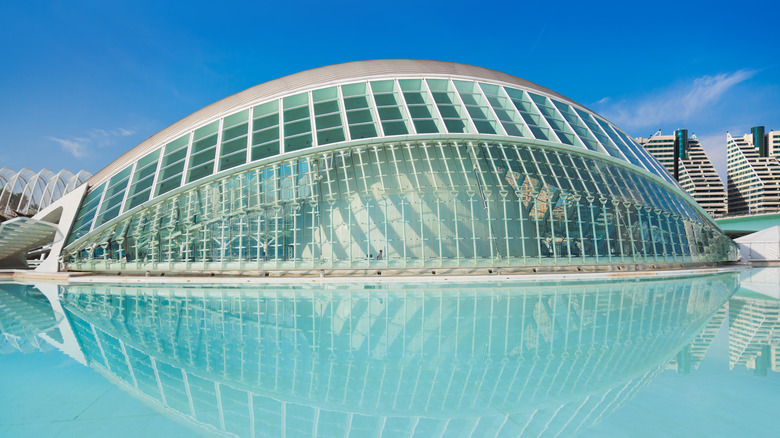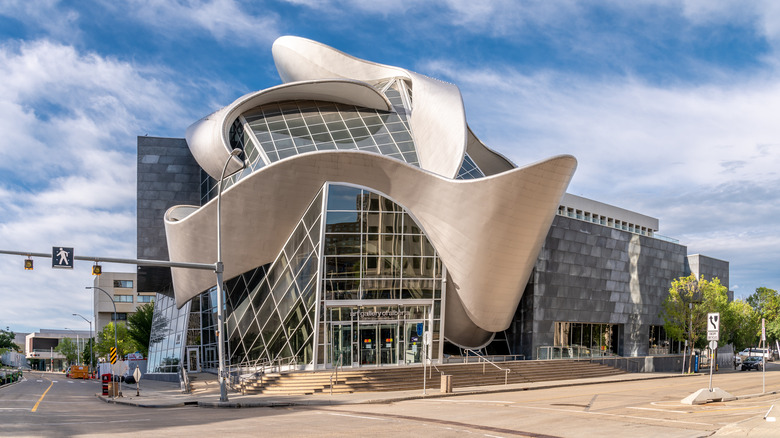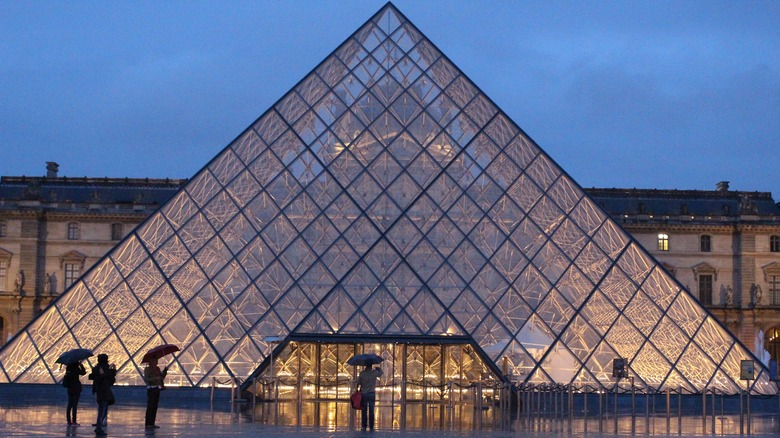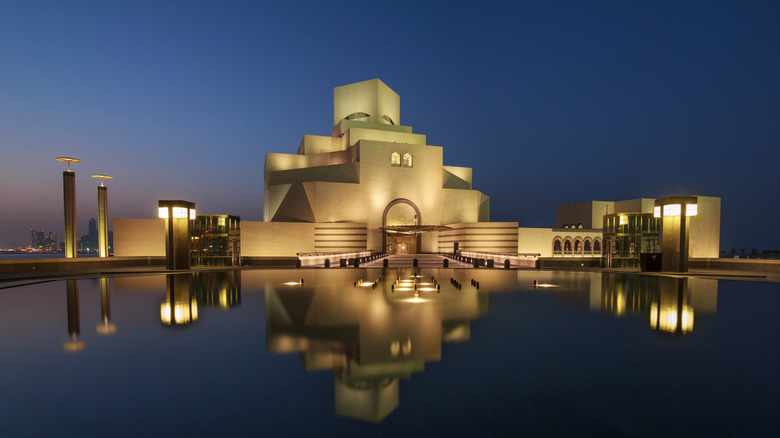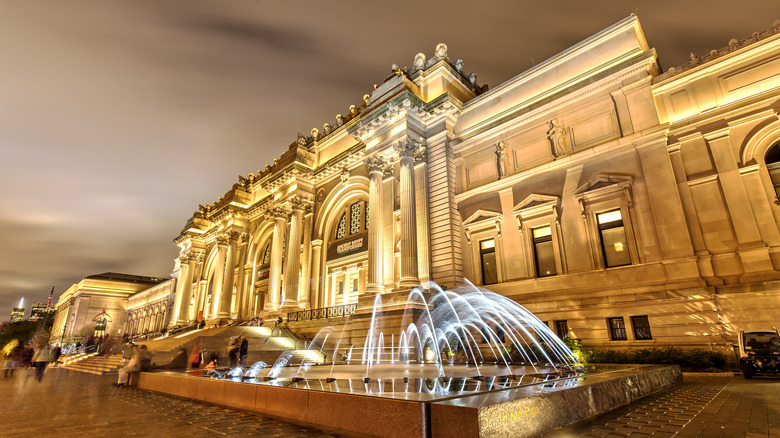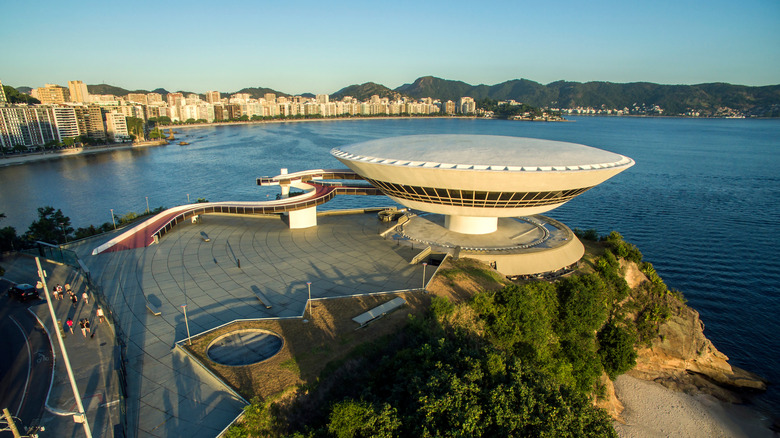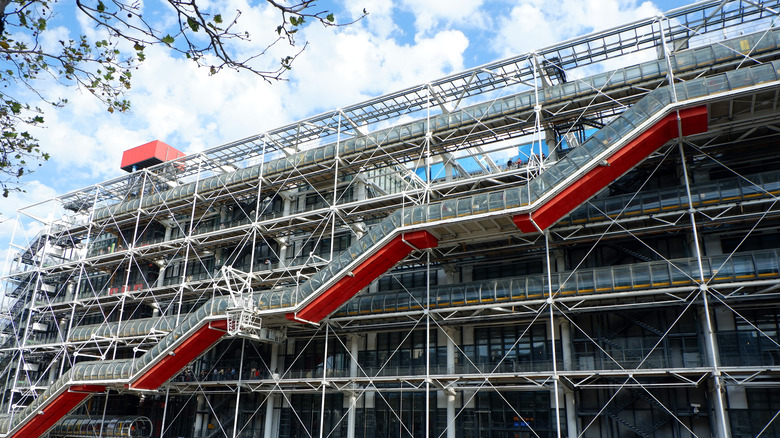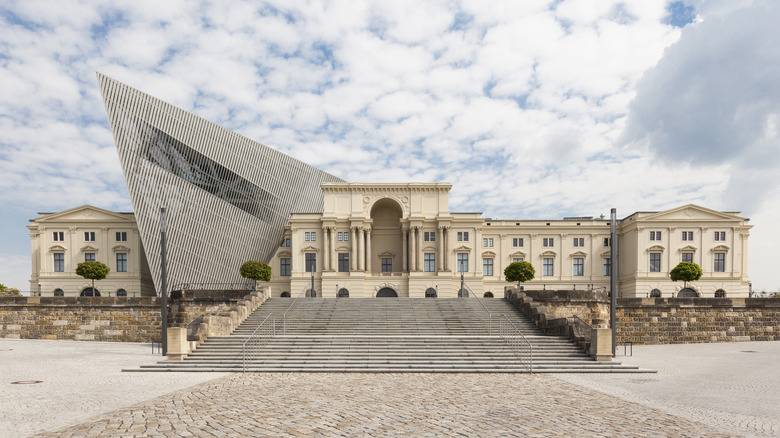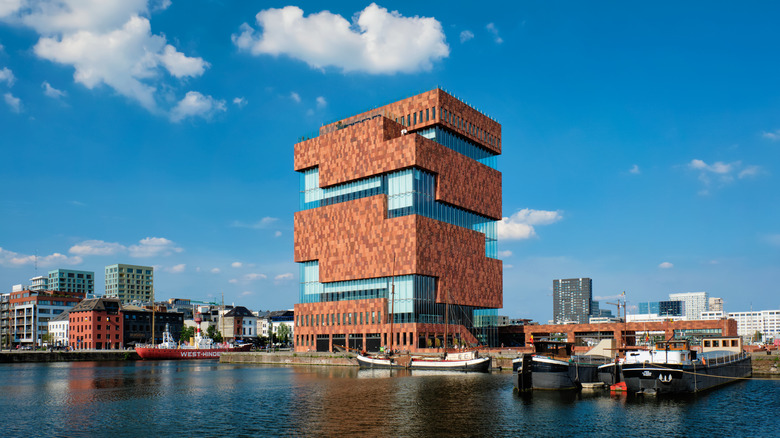Most Stunning Museums Around The World
While most museums around the world are best known for their historical and exclusive exhibits and art pieces, there are several museums that are just as incredible on the outside as they are on the inside. Between having some of the most unique and one-of-a-kind designs to being surrounded by beautiful landscapes and cities, many museums do not get the proper recognition or credit that they deserve when it comes to their impact on an architectural level. They might not be castles or basilicas, but their construction will give you the same sense of wonder. For example, according to the Louvre Museum Official Website, the museum is housed in a former king's palace, and it looks just as grand today as it did centuries ago.
Whether you are looking to explore some of the world's most priceless works of art or you prefer museums that have a more cultural or religious focal point, museums allow priceless artifacts and items to remain timeless and immortal. From the Hermitage Museum in St. Petersburg to the Museum of Islamic Art in Doha, we at House Digest have rounded up a list of the most stunning museums worldwide that you certainly have to visit at least once.
Museo Soumaya
With two buildings right in the heart of Mexico City, Museo Soumaya is a private museum that also doubles as a non-profit cultural institution. Boasting over 66,000 pieces of artwork spanning over 30 centuries, the Museo Soumaya is an art-fanatics dream. Housing everything from sculptures that date back to Pre-Hispanic Mesoamerica and various artwork of European heritage, the Museo Soumaya is known to have one of the most complete and impressive art collections in the world, as per Inexhibit.
While the original building was built in the Plaza Loreto in the southern part of Mexico City in 1994, the Museo Soumaya's current and most famous building, which houses the museum's primary collection, is located in the Plaza Carso on the northern end of the city. This building's architecture draws people in from all over the world due to its abstract shape and eye-catching hexagonal tiles. With six uniquely shaped floors, this museum has everything from a restaurant to a library to a 350-seat auditorium.
The Louis Vuitton Foundation
Previously known as the Louis Vuitton Foundation for Creation and now shortened to the Louis Vuitton Foundation, this museum promotes the love and history of art and culture through various exhibits and displays in Paris, France. Though the Louis Vuitton Foundation is run as a separate entity and nonprofit, it is sponsored by the iconic company and relevant subsidiaries. Designed by architect Frank Gehry, the museum is a premium example of modern and contemporary architecture that retains a timeless look and style, according to Archello.
This fascinating structure started as nothing more than a sketch in Gehry's notebook, and it has since become one of the most loved and appreciated modern buildings in all of France. With 12 sails that are made from 3,600 panels of curved glass, this building truly pushed the boundaries of contemporary architecture and underwent a revolutionary design process. The cohesive white coloring of the museum pairs perfectly with its inviting transparency, making it nearly impossible not to want to venture in and explore all that the Louis Vuitton Foundation has to share.
The Hermitage Museum
Located in St. Petersburg, Russia, the Hermitage Museum is an art-focused museum founded in 1764 under Catherine the Great, as per Hermitage Museum & Gardens. As the largest art museum in the entire world based on gallery space, it is pretty much impossible to expect to see everything in one day here. Housing nearly 3 million items and artifacts that span from the Stone Age to the present, the collection found at the Hermitage Museum is known to be one of the richest in existence. Specifically, the museum's collection of post-Middle Age Western European paintings, which includes a wide array of masterpieces, is by far the most valuable.
Since the Hermitage was a palace before a museum, the traditional and royal architecture is evident throughout the structure. In addition to its enormous size covering more than 750,000 feet, the most eye-catching part of the museum is perhaps its color, which is a vibrant shade of green that is quite similar to seafoam.
The Guggenheim Bilbao
According to the museum's official website, the Guggenheim Bilbao in Spain is one of the world's most revolutionary examples of 20th-century architecture. Designed by Frank Gehry, the same architect who designed the Louis Vuitton Foundation, the Guggenheim Bilbao looks more like a large-scale sculpture than it does a museum. This abstract and unbelievably stunning piece of architecture is home to various contemporary and modern art sponsored by the Guggenheim Foundation. It has been open to the public since 1997. Made from limestone, glass, and titanium, there really is no other structure like it.
Located right along the Nervión River, the Guggenheim Bilbao is home to a wide range of impressive exhibits and pieces, including Vincent van Gogh's paintings and more than 30 Pablo Picasso pieces. With optimal lighting due to the glass windows and massive skylight, the Guggenheim Bilbao will feel as though it is its own piece of art as you stroll through the museum, examining iconic examples of legendary talent.
The City of Arts and Sciences
Valencia, Spain's Ciudad de las Artes y las Ciencias, or City of Arts and Sciences, is considered one of the 12 wonders of Spain and is the city's most popular and relevant tourist destination. Situated along the Turia River, this magnificent display of architectural innovation comprises six different centers, each dedicated to a specific craft or science, as per Turespaña. Between having the largest aquarium in Europe to housing the Ágora which hosts a variety of popular concerts and events, there is something for everyone at the City of Arts and Sciences.
There are four other sections in the museum, including the Reina Sofía Palace of the Arts, which focuses on the art of opera, as well as an interactive science center. There is also the Hemisfèric, which premiers IMAX films and other forms of cinema, and the Umbracle, an outdoor sculpture garden that is absolutely out of this world. At the Umbracle, visitors can walk down a landscaped path and explore a variety of modern sculptures and plants while looking out onto the water that is just below.
The Art Gallery of Alberta
According to Architonic, the Art Gallery of Alberta is one of Canada's most acclaimed visual art centers and was designed by Randall Stout in 1924. Located on Sir Winston Churchill Square, the museum sits in a prominent and popular area. Because of this, it is known to play a significant role in the community. Being that the museum is rather transparent, even those simply walking by or examining the museum from the outside can catch a glimpse of what is occurring on the inside. This ability to interact even from a distance is what designer Randall Stout envisioned while designing the community-centered museum.
Between the city views and ample lighting, the Art Gallery of Alberta has a relatively warm and inviting environment despite being very modern in design and composition. Standing at about 10,000-square-feet, the Art Gallery of Alberta is home to several unique exhibits that showcase the history and culture of Canada through creative artworks and innovations.
The Louvre
One of the most famous and well-known museums on our list, the Louvre is a true icon in not only art and history but also in its unmatched structure and design. In addition to being a historic monument in Paris, the Louvre is also the world's most visited museum. According to the Louvre's official website, it is home to priceless art pieces such as the Venus de Milo statue and the iconic Mona Lisa painting by Leonardo DaVinci. The Louvre's collection is also one of the richest, boasting over 11,000 years of human history, culture, and art.
Before it became a public museum, the Louvre served as a royal palace for more than 200 years. The striking architecture is not easily unnoticed, and the surrounding gardens truly transport visitors to another place and time. While most of the museum that houses the art and historical artifacts is a part of the former palace, the most recognizable part of the Louvre is the Louvre Pyramid, a large metal and glass structure added in 1989 (via Architect Magazine). Chinese-American architect I. M. Pei designed the iconic pyramid.
The Museum of Islamic Art, Doha
As per the museum's official website, The Museum of Islamic Art in Doha houses more than 1,400 years of history with pieces of art from three different continents. Considered the crown jewel of Qatar museums, this center for learning and education first opened in 2008. Designed by I.M. Pei, the same architect responsible for the Louvre's iconic pyramid structure, the Museum of Islamic Art has become one of the most beloved and recognizable buildings in Doha's skyline (via Qatar Museums).
In addition to having one of the broadest collections of Islamic art worldwide, the museum's structure draws upon traditional Islamic architecture while maintaining a contemporary look. Since the building is made from limestone, there is a consistent change in the lighting each hour, creating a magical effect. On the inside of the museum, visitors will find everything from wood to stone accents, creating various textures and environments while looking at each collection. However, the sweeping views of the Persian Gulf contribute to the beauty of this museum more than anything else.
Metropolitan Museum of Art
While New York City is home to an abundance of incredible museums and art exhibits, none compare to the Metropolitan Museum of Art. Known as one of the most prominent and most renowned museums in the world, Smithsonian Magazine reports the Met has been a popular spot for locals and tourists alike for more than 150 years. After acquiring their first artifact in 1870, a Roman marble sarcophagus from the third century A.D., the collection housed by the New York Cultural Institution quickly grew by the thousands. Today the Metropolitan Museum of Art is visited by more than 7 million people annually, making it the most visited museum in the United States.
While there are many pieces art-fanatics will greatly appreciate, from Vincent van Gogh's paintings to five of the only remaining 36 paintings by Johannes Vermeer, the Met is also a wonderful place for history-lovers to explore (via The New York Times). For example, being that it is home to the Western Hemisphere's only complete Egyptian temple, this exhibit gives visitors the chance to immerse themselves in a piece of ancient Egypt.
The Niteroi Contemporary Art Museum
According to ArchDaily, the Niteroi Contemporary Art Museum was built in 1996 by well-known Brazilian architect Oscar Niemeyer. With a saucer-like structure that sits right over Guanabara Bay, this museum boasts some of the most panoramic and stunning lookout points of any museum in existence. From views of Sugar-Loaf Mountain to the seemingly endless bay, the Niteroi Contemporary Art Museum is a true architectural marvel that blends its unique structure with the surrounding landscape to create a harmonious atmosphere.
The Niteroi Contemporary Art Museum is considered one of Rio De Janeiro's main landmarks due to its one-of-a-kind style. Between the glass panels explicitly created for the project and the 3,200,000 cubic meters of concrete used to elevate the building, the museum took a solid five years to build (via Architect Magazine). However, the result will go down in history as one of the most stunning museums in the world.
The Pompidou Center
Yet another museum in Paris, the Pompidou Center is home to the National Museum of Modern Art. While the museum itself is known for its internationally renowned art collection from both the 20th and 21st centuries, the Pompidou Center is one of the most unique and show-stopping examples of postmodern architecture in the world. Easily recognized with its vibrantly colored tubing and exterior escalators that create a somewhat futurist feel, the Pompidou Center sticks out from the more traditional architecture that Paris is known for.
Considered a landmark in Paris, the Pompidou Center was designed by Richard Rogers and Renzo Piano, as per the Paris Convention and Visitors Bureau. Due to its massive size and intricate detailing, the project was not completed until 1977, despite construction being started in 1971. Though it does not have the same Parisian charm that is often sought out while visiting Paris, the Pompidou Center is an architectural marvel worth seeing in person at least once.
Bundeswehr Museum of Military History
The Bundeswehr Museum of Military History is best described as being the leading military museum of the German Armed Forces. This gorgeous building is one of the largest museums in Germany, and it boasts an architectural structure that is thoroughly stunning and eye-catching. Built in the architectural style of deconstructivism, there are very few museums, let alone buildings, that exist like it in the world. Because it serves to educate visitors on the history of the German Army from the Middle Ages to the current era, this is a very expansive museum that requires a decent amount of time and dedication to visit in its entirety.
While the original structure of the building was created in the 1870s, the newest and most fascinating part of the museum was completed in 2011 by U.S. architect Daniel Libeskind. This more recent extension makes the structure itself so incredible, appearing as a wedge that manages to cut right through the original building. According to Landeshauptstadt Dresden, the point of this wedge was to create various lights and shadows that are meant to represent the complex military history of Germany.
Museum aan de Stroom
Situated right on the banks of the Scheldt River in Antwerp, Belgium, the Museum aan de Stroom first opened its doors to the public in 2011, as per Archello. As the largest museum in Antwerp, the Museum aan de Stroom houses over 500,000 pieces with both temporary and permanent exhibits that offer a special look at the history of Belgium and its role globally. Once you are done exploring the many different artifacts and historical remnants, head up to the tenth floor of the museum. You will find panoramic views of the city that give a full 360 degrees perspective of the river and neighboring port.
When it comes to the museum itself, the Museum aan de Stroom is a true architectural phenomenon that stands nearly 200-feet tall. With 20-foot high windows broken up by layers of vibrant red tiles, the structure is almost impossible to miss when strolling along the Scheldt River. One of the Museum aan de Stroom's newest exhibits is called "Freight." It allows visitors to explore various shipping docks and learn about the city's history with foreign trade.
